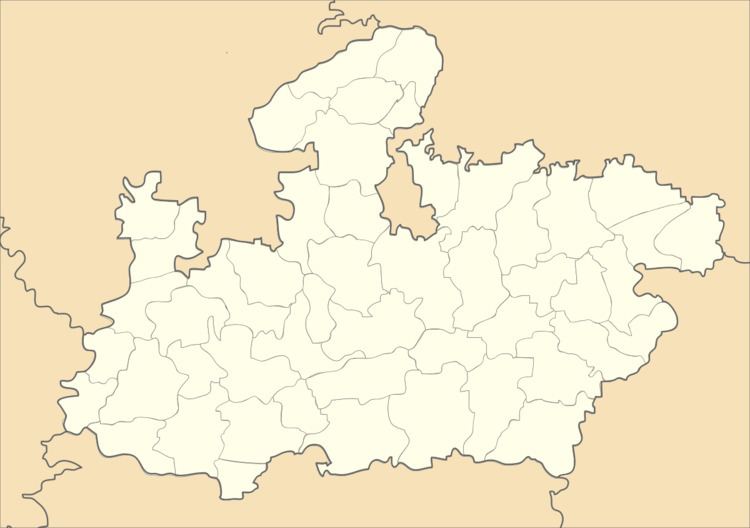PIN 471405 Elevation 398 m | Time zone IST (UTC+5:30) Vehicle registration MP-16 Local time Thursday 1:05 AM | |
 | ||
Weather 21°C, Wind NE at 3 km/h, 51% Humidity Government body Government of Madhya Pradesh | ||
Bijawar is a town and a nagar panchayat And now is called a Nagar Parishad in Chhatarpur district in the state of Madhya Pradesh, India. It is the administrative headquarters of Bijawar Taluk, and was formerly the capital of a princely state of British India of the same name.The people of Bijawar are demanding the district status from their state government.
Contents
- Map of Bijawar Madhya Pradesh 471405
- History
- Rulers
- Rajas
- Maharajas title from 1877 Sawai Maharaja
- Geography
- Demographics
- References
Map of Bijawar, Madhya Pradesh 471405
History
The native state of Bijawar covered an area of 2520 km² (973 sq. m.) in the Bundelkhand Agency. Forests covered nearly half the total area of the state, which was believed to be rich in minerals, but lack of transport facilities had hindered the development of its resources.
The state takes its name from the chief town, Bijawar, which was founded by Bijai Singh, one of the Gond chiefs of Garha Mandla, in the 17th century. The first ruler of the state was Bir Singh Deo (1765–93), a Bundela Rajput descended from the ruler of Orchha. It was conquered in the 18th century by Chhatarsal, the founder of Panna, a Rajput of the Bundela clan, by whose descendants it was held till its accession to India. It was confirmed to Ratan Singh in 1811 by the British government for the usual deed of allegiance. In 1857 Bhan Pratap Singh rendered signal services to the British during the Mutiny, being rewarded with certain privileges and a hereditary salute of eleven guns. In 1866 he received the title of Maharaja, and the prefix Sawai in 1877. Bhan Pratap was succeeded on his death in 1899 by his adopted son, Sanwant Singh, a son of the Maharaja of Orchha.
The state acceded to India on 1 January 1950, and became part of the state of Vindhya Pradesh, which was merged into Madhya Pradesh on 1 November 1956.
Bijwar is also known for Jatashankar (www.jatashankar.in), a holy place about 18 km from the town. Bijawar is also known for Janki Nibas Temple because it's similar to Ayodhya Temple. Another famous temple, Kanchan Temple, was built by Maharani Kanchan Kuwar of Bijawar. Maharani Kanchan Kuwar was born in Karahiya and Princes of Karahiya and was the daughter of H.H Rao Shahab of Karahiya.
Rulers
The rulers belonged to the Bundela dynasty.
Rajas
Maharajas (title from 1877 Sawai Maharaja)
Geography
Bijawar is located at 24.63°N 79.5°E / 24.63; 79.5. It has an average elevation of 398 metres (1305 feet).
Demographics
As of 2001 India census, Bijawar had a population of 18,412. Males constitute 53% of the population and females 47%. Bijawar has an average literacy rate of 59%, lower than the national average of 59.5%; with male literacy of 66% and female literacy of 50%. 16% of the population is under 6 years of age.
